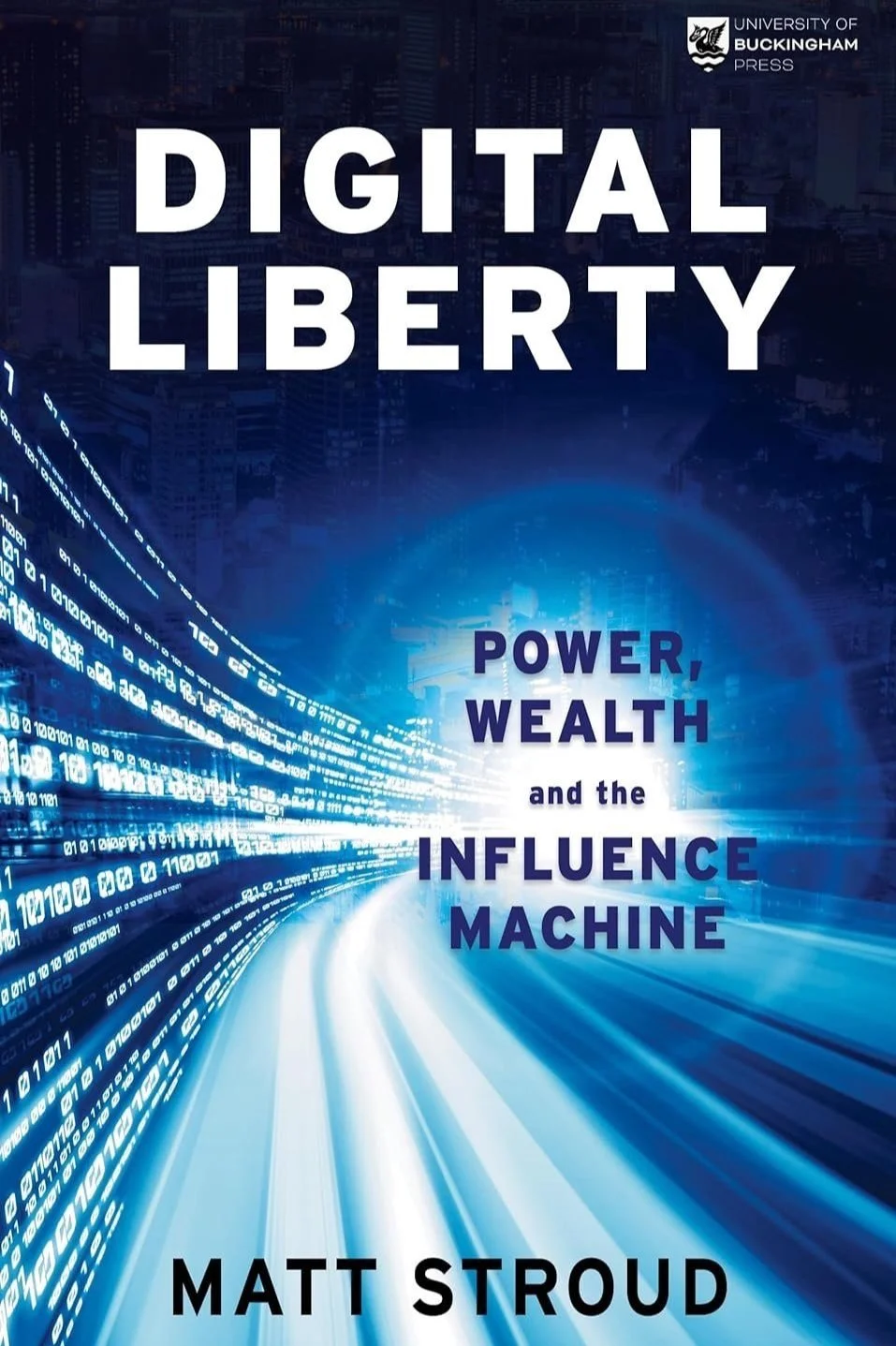
DIGITAL LIBERTY
Your companion to our digital past, present, and future. Highlighting the pressing issues arising from our digital evolution, it is a must-read for students, policymakers and everyone who want to safeguard our liberal future.

About the book
Synopsis
At its heart, this is a book about how three themes will combine to create a crisis in which our future will be forged. The three themes are data, AI and society’s social graph. Together, they will challenge the very foundations of our open, liberal democracies. To navigate this crisis, we will need to look to the past, to the fundamental values of liberalism and adapt those lessons to a new context. Emerging from the crisis will lay two very different paths.
The first path leads to a dystopian future, in which we fail to adapt and carry on as much as we are. This is a future in which inequality surges, impoverishing much of society. While a wealthy elite becomes almost stateless, circling the globe, moving between favourable financial and temperate climates. Associated with this dystopian future is social unrest, and neutered governments starved of the resources they need to manage the situation.
The second path leads to a utopian future in which we succeed in adapting to the crisis. By achieving a deeper understanding of our free will and free markets, we are able to preserve a greater degree of individual agency. This preserves our social stability and enables us to harness new digital technologies to rapidly expand our wealth, while reducing unfairness in society. In this scenario, we see those technologies not just as tools, but as a new element in our social fabric.
To navigate this fork in the road, we must illuminate a deep interconnection between our technology’s architecture and the character of our societies. Digital technology will become society's nervous system, and its architecture will shape the behaviour of individuals and societies. Digital Liberty is about navigating these choices, and how we can build the future we want for our children.
Structure of the book
The first five chapters bring the reader up to speed with the three themes: data, AI, and the social graph. The first three chapters, “Welcome to the Panopticon”, “Data’s Wild West”, and “Rise of the Digital Oracles”, look at the past. They explore how and why today’s digital landscape emerged as it did and what benefits and harms it has brought. The two following chapters, “The Future of AI” and “The Dynamics of Influence”, look at future capabilities that we can see emerging. Together, these five chapters set the scene.
With the scene set, we move on to the chapters “Fork in the Road” and “Rewiring the Matrix”, which are about power. The first draws the connection between our technology’s architecture and the political functioning of society. In this chapter, we introduce the concept of the Influence Machine and how the art of influencing is becoming a science. Further, we will look at why our choice to centralise or decentralise our data and AI will set us on very different political and philosophical paths. The second of these chapters describes what a decentralised architecture could look like and how it can be built. In this chapter, we identify a set of principles to guide us toward a positive future and consider to what degree the innovations emerging today will enable that outcome.
Wealth is the topic of the next three chapters, “Better Lives”, Better Businesses” and Better Societies”. The first two focus on financial wealth, and we see the epic scale of the benefits that can be unlocked by decentralising our technology. The third of these chapters, Better Societies, looks at wealth in the context of the well-being of individuals and society - better public policy, improved efficiency and greater social cohesion.
Finally, in Chapter 11, “Choices”, we consider how these changes may impact political philosophy and what choices we may need to take to preserve our open, liberal democracies.

DIGITAL LIBERTY
Book Contents
0. PROLOGUE
1. WELCOME TO THE PANOPTICON
2. DATA’S WILD WEST
3. RISE OF THE DIGITAL ORACLES
4. THE FUTURE OF AI
5. THE DYNAMICS OF INFLUENCE
6. A FORK IN THE ROAD
7. THE MATRIX REWIRED
8. BETTER LIVES
9. BETTER BUSINESSES
10. BETTER SOCIETIES
11. CHOICES
ABOUT THE AUTHOR
Appendix 1: Personal AI, Data & ID
References
